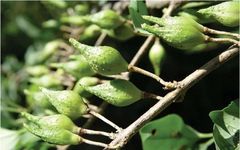Pinyin Lián Qiáo
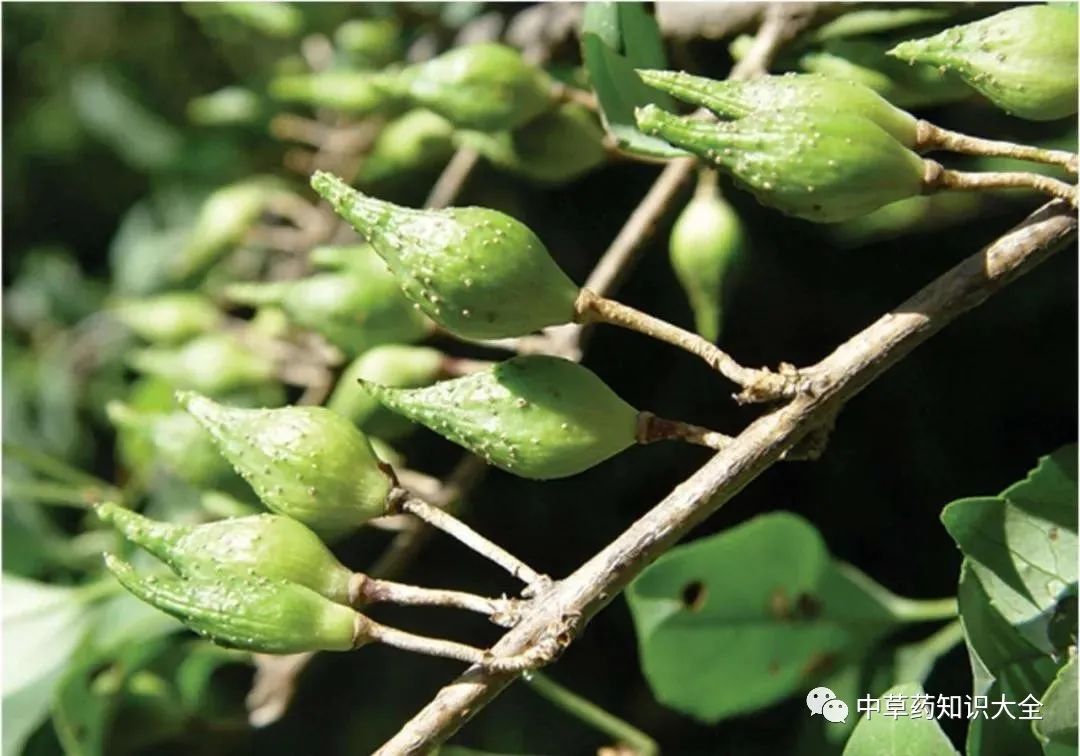
Alias Hàn Lián Zǐ (旱连子) (“Discussion on Medicinal Properties”), Dà Qiáo Zǐ (大翘子) (“Tang Materia Medica”), Kōng Ké (空壳) (“Compendium of Chinese Medicine”).
Source “Shennong’s Classic of Materia Medica”
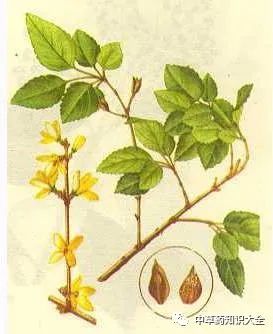
Origin The fruit of the plant Forsythia suspensa, belonging to the Oleaceae family. The fruit is harvested when it is immature or fully ripe. Immature fruits are steamed and dried while still green, referred to as “Qīng Qiáo”; fully ripe fruits are dried after harvesting, with seeds and impurities removed, referred to as “Lǎo Qiáo”; the seeds are called “Lián Qiáo Xīn”.

Habitat Distribution Grows in clusters in mountainous and wild areas, and is cultivated in various regions. It is distributed in Liaoning, Hebei, Henan, Shandong, Jiangsu, Hubei, Jiangxi, Yunnan, Shanxi, Shaanxi, and Gansu. The main production areas are Shanxi, Henan, Shaanxi, and Shandong. Additionally, it is also produced in Hubei, Hebei, Sichuan, and Gansu.
Plant Morphology Lian Qiao, also known as Lián (连), Yì Qiáo (异翘) (“Erya”), Lán Huā (兰华), Zhí (轵), Zhé Gēn (折根), Sān Lián (三廉) (“Shennong’s Classic”), Lián Cǎo (连草) (“Erya” Guo Pu’s note), Dà Qiáo (大翘) (“Tang Materia Medica”), Huáng Huā Gǎn (黄花杆), Huáng Shòu Dān (黄寿丹), Huáng Huā Biàn (黄花瓣), Luò Qiáo (落翘), Huáng Huā Tiáo (黄花条).
Deciduous shrub, 2-4 meters tall. Branches are spreading or elongated, slightly vine-like, often rooting at the ground. Young branches are slightly quadrangular, with hollow internodes, solid only at the nodes. Leaves are opposite, or may be trifoliate; petioles are 8-20 mm long; leaf blades are ovate, elongated ovate, broadly ovate to round, 3-7 cm long, 2-4 cm wide, with tips gradually pointed, acute, or blunt. The base is broadly wedge-shaped or round, with irregular serrated margins; semi-leathery. Flowers bloom before the leaves, axillary, about 2.5 cm long; calyx deeply divided into 4 lobes, oval; corolla tubular at the base, 4-lobed at the top, lobes are ovate. Golden yellow, usually with orange-red stripes; stamens 2, attached at the base of the corolla; pistil 1, ovary oval, style long and slender, stigma bifid. The capsule is narrowly oval and slightly flattened, about 15 cm long, with a short beak at the tip, splitting into 2 valves when mature. Seeds are numerous, brown, narrow-oval, flat, with a thin wing on one side. Flowering period is from March to May. Fruiting period is from July to August.
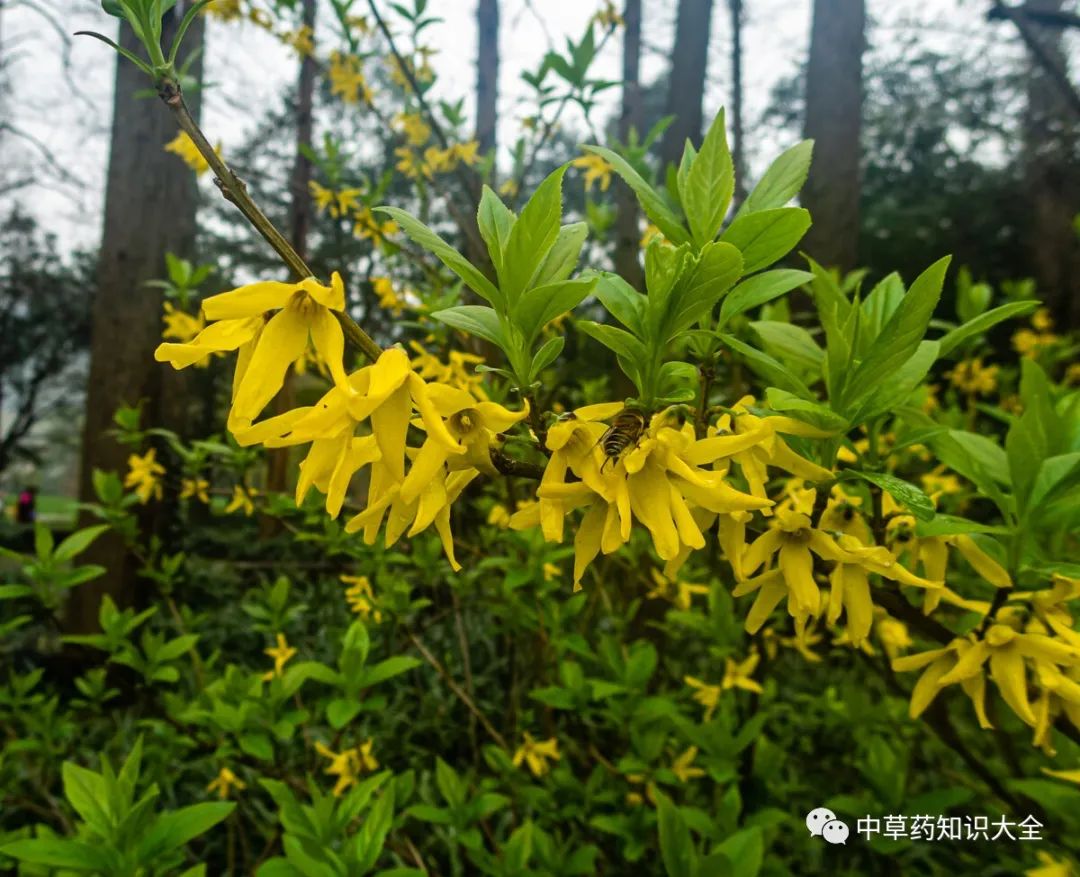
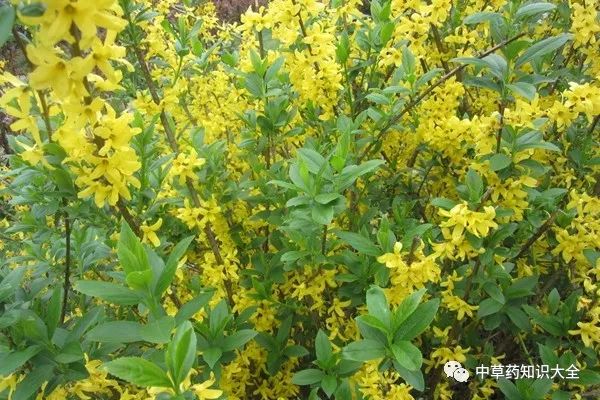
Characteristics Dried fruits are long oval, 1.5-2 cm long, 0.6-1 cm in diameter. The tip is sharp, with a small stalk at the base, or it may have fallen off. The surface has irregular longitudinal wrinkles and many small raised spots, with a distinct longitudinal groove on each side. Qīng Qiáo is mostly uncracked, green-brown, with fewer raised gray-white spots on the surface, and many seeds, slender, with a wing on one side, yellow-green. Lǎo Qiáo cracks from the tip or splits into two valves, with a surface that is yellow-brown or red-brown, and the inner surface is mostly light yellow-brown, with brown seeds, many of which have fallen off. It has a faint fragrance and a bitter taste. Qīng Qiáo is best when it is green and without branches; Lǎo Qiáo is best when it is yellow, thick-shelled, seedless, and pure.
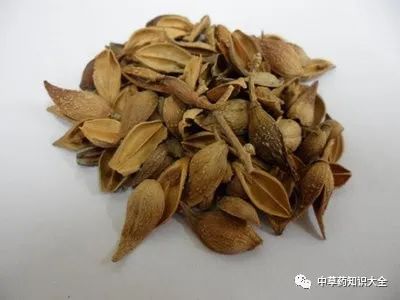
Chemical Components The fruit contains forsythiaside, steroid compounds, saponins (non-hemolytic), flavonoids, and resin glycosides. The fruit skin contains oleanolic acid. Qīng Lián Qiáo contains 4.89% saponins and 0.2% alkaloids.
Pharmacological Effects ① Antibacterial Effects
The concentrated decoction of Lian Qiao has antibacterial effects in vitro, inhibiting Salmonella typhi, paratyphoid bacilli, Escherichia coli, Shigella, Corynebacterium diphtheriae, Vibrio cholerae, Staphylococcus, Streptococcus, etc. The antibacterial effect of Lian Qiao in vitro is similar to that of Jin Yin Hua (金银花); it is the main antibacterial component in Yin Qiao San (银翘散). Jin Yin Hua has a stronger inhibitory effect on Salmonella, especially Salmonella typhi and hemolytic streptococci, while Lian Qiao shows better inhibition on Shigella and Staphylococcus aureus. When used together, there is no synergistic effect in vitro, and when combined with Huang Lian (黄连) and Huang Qin (黄芩), the antibacterial effect is reportedly stronger than using Lian Qiao alone. There is limited research on the effective antibacterial components in Lian Qiao; forsythiaside has an inhibitory concentration of 1:5120 against Staphylococcus aureus, 1:1280 against Shigella, and 1:640 against Corynebacterium diphtheriae and paratyphoid (A) bacilli, which may be the effective antibacterial component. The flowers have some efficacy against experimental tuberculosis in mice but are ineffective in guinea pigs. Additionally, there have been reports of its action against Mycobacterium tuberculosis in vitro and clinically. The alcohol extract of Lian Qiao has some inhibitory effects on Leptospira in vitro, but its strength is not as strong as Huang Lian, Lychee grass, or Jin Yin Hua, Huang Qin, and is similar to Huang Bai (黄柏) and Zao Jiao (蚤休). The water infusion of Lian Qiao (1:5) has some inhibitory effects on Nocardia asteroides in vitro. The ethanol and acetone extracts of Korean Lian Qiao fruit and the resin extracted from F. intermedia have antifungal effects.
② Other Effects
Lian Qiao can inhibit the emetic effect of digitalis on pigeons, reducing the frequency of vomiting without changing the latency of vomiting; its antiemetic effect is similar to that of chlorpromazine two hours after injection. It can also inhibit vomiting induced by subcutaneous injection of morphine in dogs, suggesting that its antiemetic action may be due to the inhibition of the chemoreceptor trigger zone in the medulla oblongata. The fruit skin of Lian Qiao contains oleanolic acid (also known as oleuropein), thus it has cardiotonic and diuretic effects.
Preparation Remove impurities, rub open, and remove branches and stems.
Meridian Entry Enters the Heart, Liver, and Gallbladder meridians.
① “Tang Ye Ben Cao”: “Hand and foot Shaoyang, Yangming meridians.”
② “Gang Mu”: “Shaoyin Heart meridian, Jueyin Pericardium Qi division.”
③ “Leigong’s Preparation of Medicinal Properties Explained”: “Enters the Heart, Liver, Gallbladder, Stomach, Sanjiao, and Large Intestine meridians.”
Properties and Flavor Bitter, cool.
① “Shennong’s Classic”: “Bitter taste, neutral.”
② “Bielu”: “Non-toxic.”
③ “Yixue Qiyuan”: “According to ‘Main Treatment Secrets’, it is cool in nature and bitter in taste.”
④ “Gang Mu”: “Slightly bitter and pungent.”
Precautions Avoid use in cases of spleen and stomach deficiency, qi deficiency with fever, and when there is pus and a light-colored discharge from sores.
① “Bencao Jing Shu”: “Do not use if sores have already ruptured, do not use if there is great heat due to deficiency, do not use if the spleen and stomach are weak and prone to diarrhea.”
② “Bencao Tongxuan”: “Long-term use may lead to cold accumulation issues.”
Main Functions and Indications Clears heat, detoxifies, disperses nodules, and reduces swelling. Treats warm heat, erysipelas, rashes, abscesses, and lymphadenitis, as well as urinary obstruction.
① “Shennong’s Classic”: “Mainly treats cold and heat, mouse atrophy, lymphadenitis, abscesses, malignant sores, goiter, and heat accumulation.”
② “Bielu”: “Eliminates white worms.”
③ “Yao Xing Lun”: “Mainly promotes urination, relieves urinary obstruction, and eliminates heat from the heart.”
④ “Rihua Zi Bencao”: “Unblocks the small intestine, drains pus. Treats sores and boils, relieves pain, and regulates menstruation.”
⑤ Li Gao: “Disperses blood stasis and qi stagnation; reduces swelling.”
⑥ Wang Haogu: “Treats deafness and tinnitus.”
Dosage and Administration Internal use: decoction, 9-15 grams; or in pills or powder. External use: decoction for washing.
Formulas ① For treating Taiyin wind warmth, warm heat, warm epidemic, and winter warmth, with initial symptoms of heat without aversion to cold and thirst: Lian Qiao 30 grams, Jin Hua 30 grams, Ku Guo 18 grams, Bo He 18 grams, Zhu Ye 12 grams, Sheng Gan Cao 15 grams, Jie Sui 12 grams, Dan Dou Chi 15 grams, Niu Bang Zi 18 grams. Grind into a powder, take 18 grams each time, decoct with fresh reed root soup, and take when fragrant, do not overboil. For severe cases, take three times a day; for mild cases, take three times a day; if the illness does not resolve, repeat the dose. (“Warm Disease Differentiation”)
② For treating all types of heat in children: Lian Qiao, Fang Feng, Gan Cao (roasted), and Shan Zhi Zi in equal parts. Grind and sift into powder, take 6 grams each time, decoct with 150 ml of water, and take warm. (“Classified Evidence for Living”)
③ For treating red rashes and toxic conditions: Lian Qiao alone, decoct and drink. (“Yuqiao Medical Order”)
④ For treating breast abscesses and lumps: Lian Qiao, male mouse feces, dandelion, and Chuan Bei Mu, each 6 grams. Decoction for oral administration. (“Yuqiao Medical Order”)
⑤ For treating lymphadenitis that does not resolve: Lian Qiao, Gui Jian Yu, Qu Mai, and Gan Cao (roasted) in equal parts. Grind into fine powder, take 6 grams with rice water before bed. (“Yang’s Family Collection”)
⑥ For treating tongue ulcers: Lian Qiao 30 grams, Huang Bai 15 grams, Gan Cao 10 grams. Decoct and use as a mouthwash. (“Yuqiao Medical Order”)
Clinical Applications ① Treatment of acute nephritis
Take 18 grams of Lian Qiao, add water and simmer until 150 ml, divide into three doses before meals, reduce for children. Depending on the condition, take continuously for 5-10 days, avoiding spicy foods and salt. In 8 patients, all had edema, blood pressure between 140-200/96-110 mmHg, and urine tests showed protein, granular casts, and red and white blood cells. After treatment, 6 cases of edema completely subsided, 2 cases showed significant improvement; blood pressure decreased significantly; urine tests turned negative in 6 cases, and 2 cases improved.
② Treatment of purpura
Take 18 grams of Lian Qiao, add water and simmer to 150 ml, divide into three doses before meals, avoiding spicy foods. Treated 1 case of thrombocytopenic purpura and 2 cases of allergic purpura. After 2-7 days of treatment, all skin purpura subsided. The effect of Lian Qiao on this condition may be related to its high content of rutin, which helps maintain normal capillary resistance and reduces capillary fragility and permeability; additionally, Lian Qiao seems to have a desensitizing effect.
③ Treatment of lung abscess
Prepare Lian Qiao as an injection, with 1 gram of Lian Qiao per milliliter. Administer via tracheal drip combined with intramuscular injection. Tracheal drip generally uses 6-10 ml, once daily; after symptoms improve, every other day; when approaching shrinkage or closure, twice a week. Treated 25 cases, cured 14 cases, improved 10 cases, and 1 case died; according to 18 cases, the average treatment lasted 12 days with fever resolution, and the average tracheal drip was 26.8 times, with a maximum of 50 times.
④ Treatment of retinal hemorrhage
Take 18-21 grams of Lian Qiao, simmer with water, divide into three doses before meals. In 2 cases of retinal hemorrhage in the macular area, after 20-27 days of medication, both showed significant absorption and improvement in vision.
Excerpt from “Dictionary of Chinese Medicinal Herbs”

Note:This account aims to promote Chinese medicine culture; the TCM knowledge mentioned in the text is for learning and exchange purposes only.
WeChat has been updated! If youneither★starred me, nor liked or

